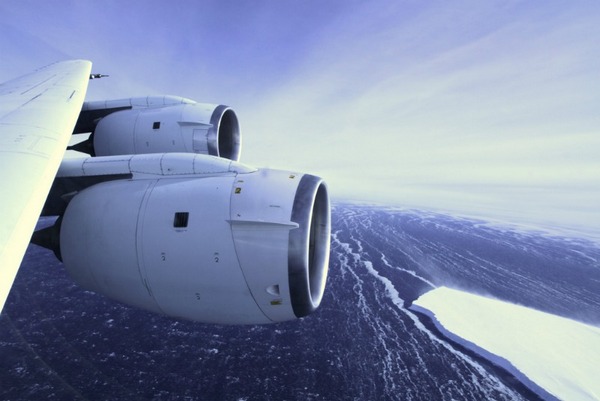
Antarctica from Above: Watch the Birth of an Iceberg

A gigantic plain of ice clinging to the edge of Antarctica is splitting in two. The Pine Island Glacier ice shelf is giving birth to a giant iceberg, and NASA scientists happened to be on hand to catch some stunning, up-close views of the action.
In a new OurAmazingPlanet video, viewers can take a vicarious trip to Antarctica to see the icy canyon, which is nearly 20 miles (32 kilometers) long, and learn why scientists are so interested in this lonely stretch of ice, which is the floating front end of the Pine Island Glacier.
The Pine Island Glacier (also known as PIG) and its ice shelf are getting a lot of attention from scientists these days.
The glacier, which moves ice from the interior of the continent and into the sea, has sped up markedly in the last decade. It is now one of the fastest glaciers in Antarctica, speeding along at a clip of about 2.5 miles (4 km) per year.
Overall, Antarctica is home to about 70 percent of the planet's fresh water and 90 percent of the planet's freshwater ice. Its two massive ice sheets, nearly 3 miles (4 km) thick in some places, cover about 99 percent of the continental landmass.
And although the ice sheet that covers East Antarctica appears to be fairly stable, ice in West Antarctica — the home of PIG, and many other glaciers — is changing and disappearing at a far faster rate than anyone thought was possible several decades ago.
Changes in the ice have big implications for people everywhere; when ice slides off the continent and into the sea, it raises sea levels around the world.
Sign up for the Live Science daily newsletter now
Get the world’s most fascinating discoveries delivered straight to your inbox.
The region of West Antarctica that is home to the Pine Island Glacier and its ice shelf is responsible for about 7 percent of global sea level rise. As a whole, Antarctica accounts for about one-third of global sea level rise, according to NASA.
Reach Andrea Mustain at amustain@techmedianetwork.com. Follow her on Twitter @AndreaMustain. Follow OurAmazingPlanet for the latest in Earth science and exploration news on Twitter @OAPlanet and on Facebook.










